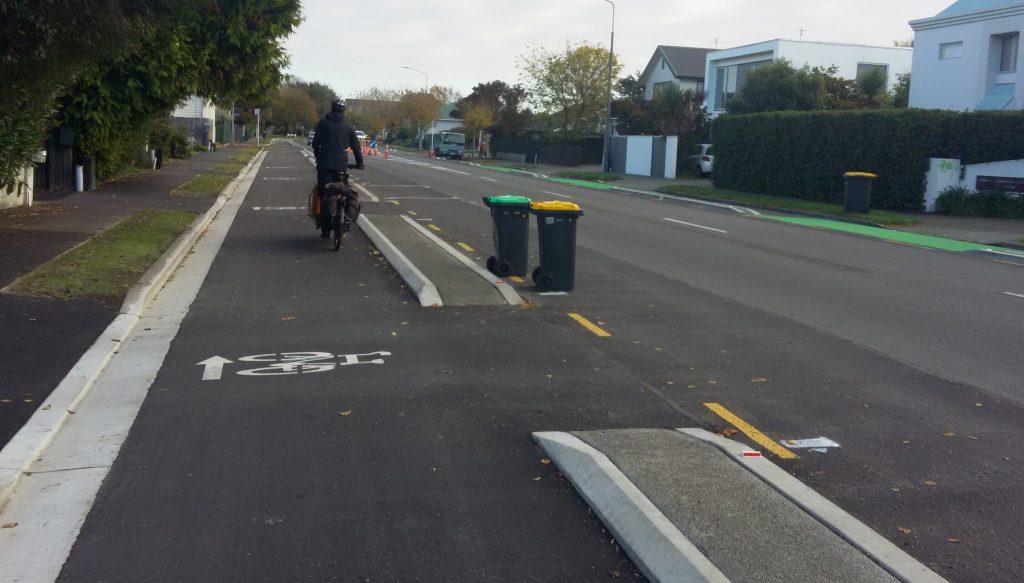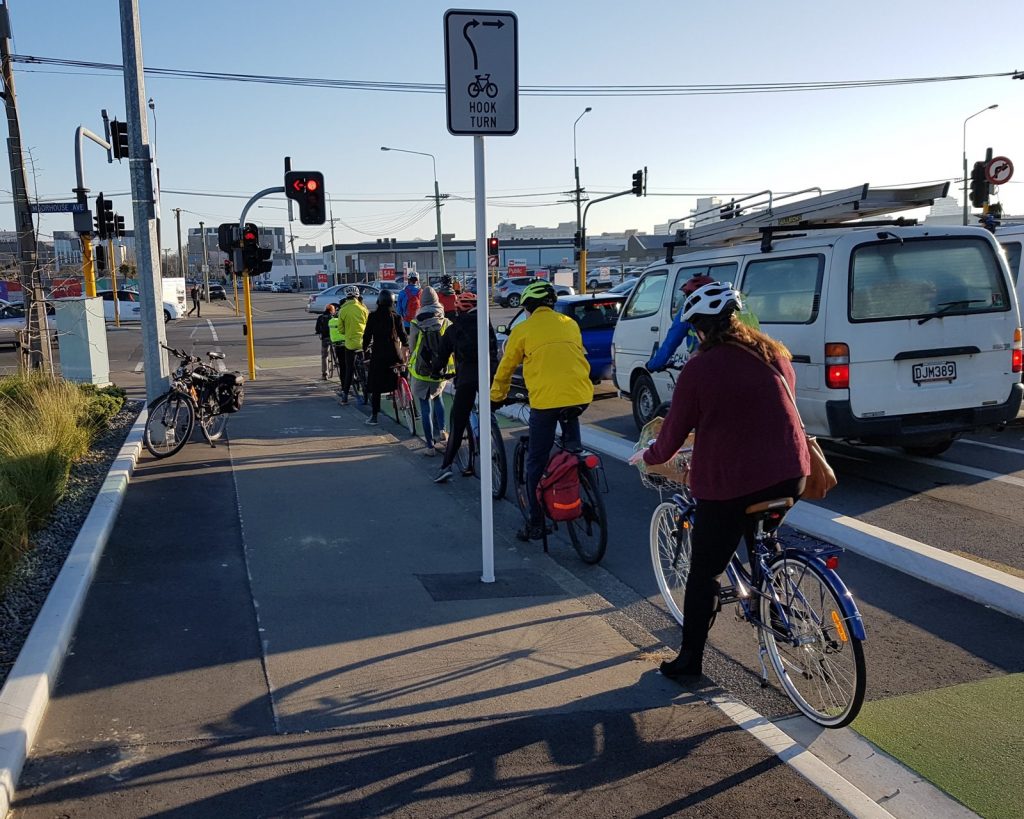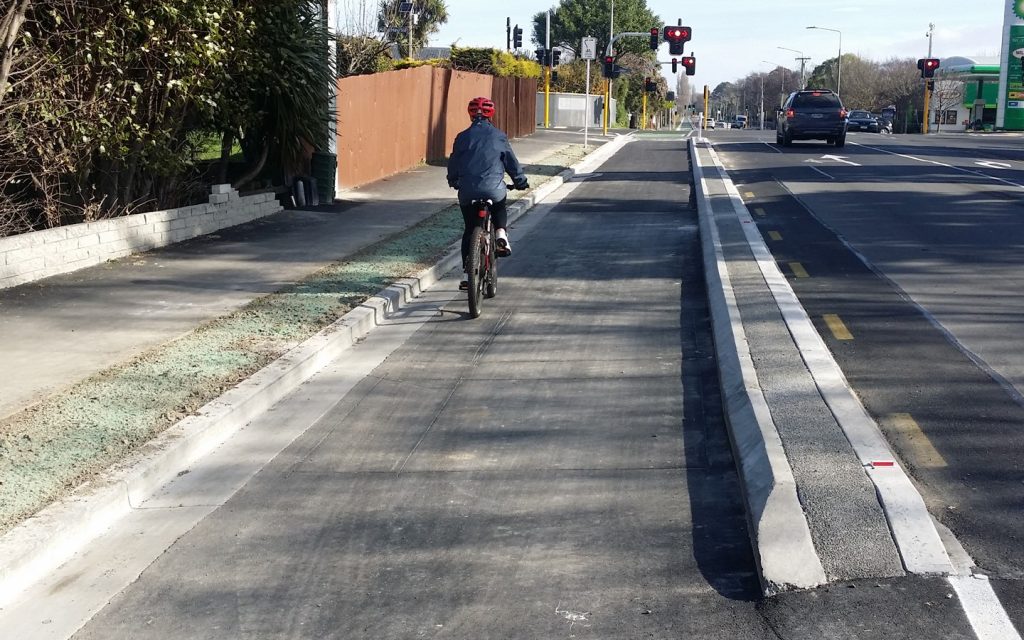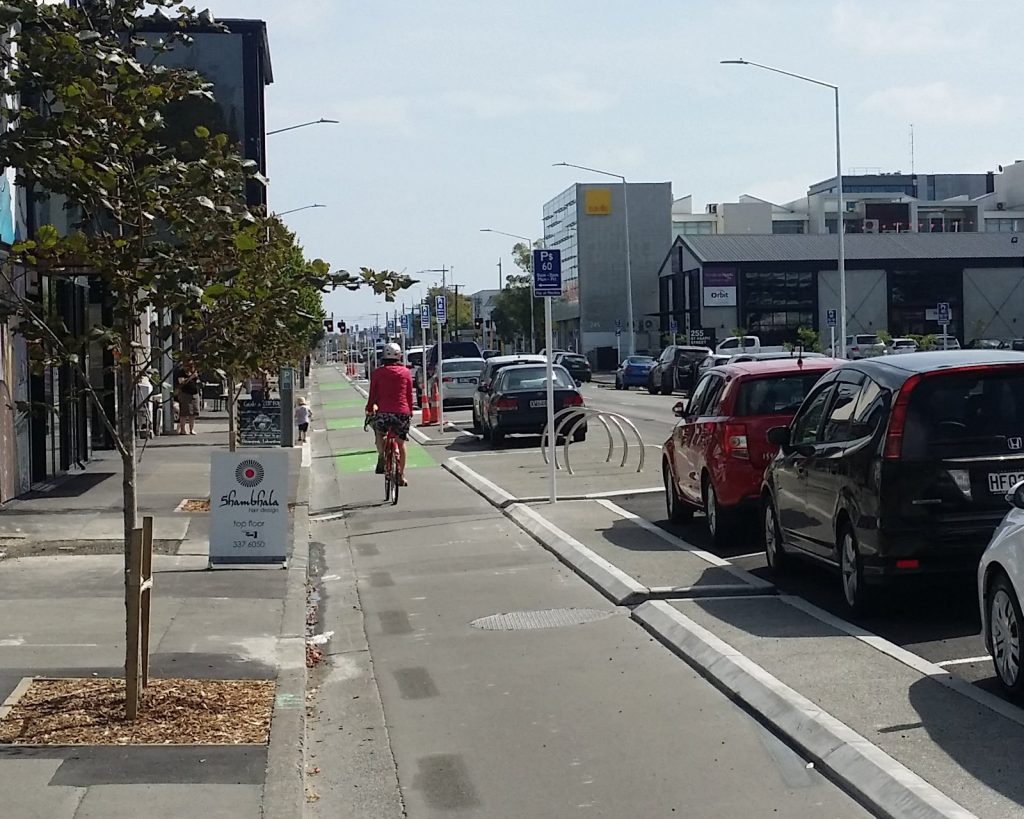When I visited the cycle-friendly city of Portland (Oregon US) nearly a decade ago, I remember being intrigued to see a “bike overtaking lane” on the climb up to a bridge. Perhaps I shouldn’t have been surprised for a route that can have over 5000 bikes a day in summer – and indeed, I’d just spent time in Copenhagen where cycleways three bikes wide were relatively common.

Fast forward a few years and here in Christchurch that kind of passing capacity is being taken into account in building the new cycleways. Indeed, some of the complaints that have arisen with the development of the new separated cycleways relate to their width; contrary to the previous 1.5-1.8m painted cycle lanes of old, many of the new one-way separated bikeways are at least 2.0m wide, if not more. “Why do they need all that space?!” we hear the cries.

The answer is of course that new wider cycleways allow for passing others within the confines of the kerbs (they’re also nice for riding side-by-side with your biking buddy…). Given that some of our cycleways already have hundreds of riders in the peak hours, it is not surprising that there can be a bit of ‘friction’ as riders of different speeds encounter each other.

If you grew up being used to normal painted cycle lanes, then you would typically just “take the lane”. But plonking yourself in the middle of a new wide cycleway is likely to earn the ire of a few faster riders. Hence, it’s time to get used to a new maxim: keep left unless passing.

A few other pointers:
- Riding side by side with your friends and family is a great perk of the new cycleways – but just be aware of anyone trying to get past and move over if need be.
- Not everywhere is wide enough for two bikes side-by-side, e.g. sometimes the cycleways narrow near parking or bus stops. You might have to bide your time to pass and just wait – or perhaps use the roadway instead to overtake.
- If someone isn’t positioned to allow clear passing, don’t get aggro – maybe they’re just not aware. A gentle bell ring or polite “excuse me, coming through” may be sufficient to get them to move over.
- If you’re riding behind someone and decide to pass them, make sure that you have a look behind you before pulling out – there could be someone else behind you coming through.
- Remember that “keep left” doesn’t apply when we are talking about conventional cycle lanes next to car parking. You should always steer well clear to prevent “dooring” – if you can reach out and touch the car, then you are too close.

The new cycleways are proving very effective in attracting growing numbers on their bikes. However, the potential price of that popularity is a bit of niggle between riders of different speeds. It’s up to everyone to play nice so that cycling is a great experience for all.
Have you encountered any problems passing or being passed on new cycleways?


I’ve noticed this issue particularly on the St Asaph cycleway. In order to keep up with the “green wave” of traffic lights you have to pedal flat out along there, which means a lot of overtaking of slower cyclists. Even when each cyclist is sticking to their side of the lane, it still still feels very narrow for overtaking. If traffic on their rises significantly I could see more complaints that they built the cycleway too narrow
Get a bell, Lance…
Or, to the tune of the Lone Ranger theme (William Tell Overture):
Get a bell, get a bell, get a bell bell bell
Get a bell, get a bell, get a bell bell bell
Get a bell, get a bell, get a bell bell bell
Get a beeeeelllll, get a bell bell bell.
Thank you for a much needed post.
Sadly room for passing, or for eventual increased use, is not being provided in most instances. This is especially true on non MCR routes. Just take a look at plans for High St, a designated cycle route, where lanes are narrow and hard up against on street parking.
I realize that it is good to encourage Council to keep up the “good work” and we are making progress. But what is being delivered will fail us as more of us cycle. Passing the cycle counter at the Antigua Street bridge the other night about 8 it had over 1,800 for the day. People want to cycle, even in winter, and narrow “just enough” widths stifle that.
High St is not separated though, if you want to pass, just pull out of the cycle lane. With the low speed limit, any cars won’t be very fast either. I am not very concerned about that part on the High St plans.
Overall though, this might be a good argument to create low-cost separated cycle ways first, and then once usage is high provide wider cycleways in the future.
Agreed – there is no compulsion to ride in a cycle lane if there is one available. So passing safely can be a simple matter of popping onto the road for a short bit. This works really well in the 30 km/h sections of town.
Downside, it makes you look bad from a non-cyclists point-of-view, and gives the anti-cyclelaneist (?) ammunition to say “look at all the money spent on bike lanes and they’re still not using them!”